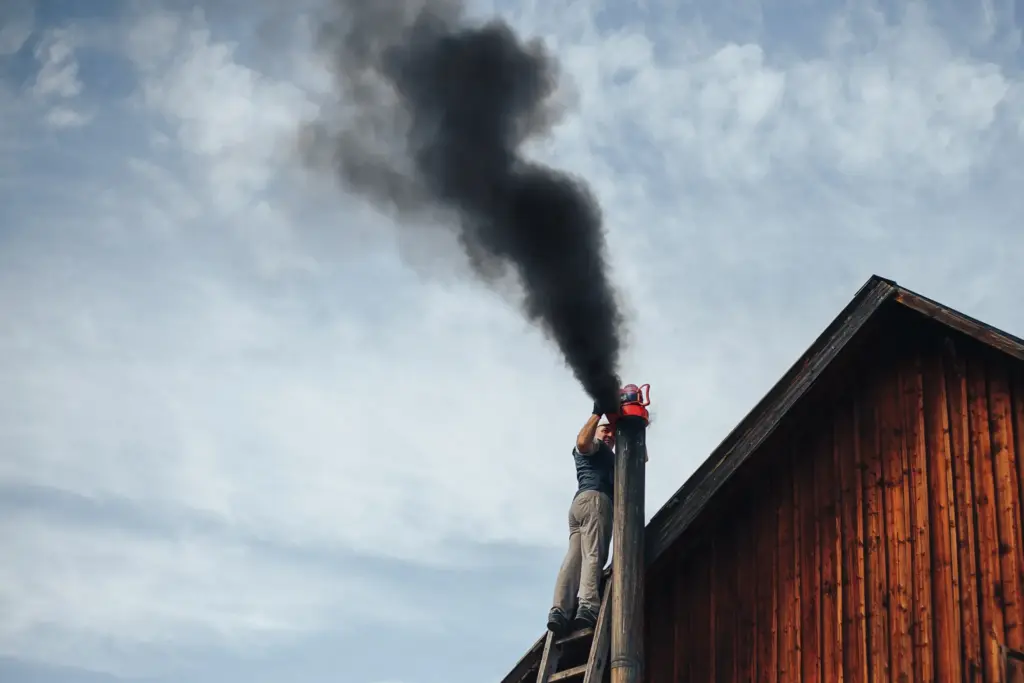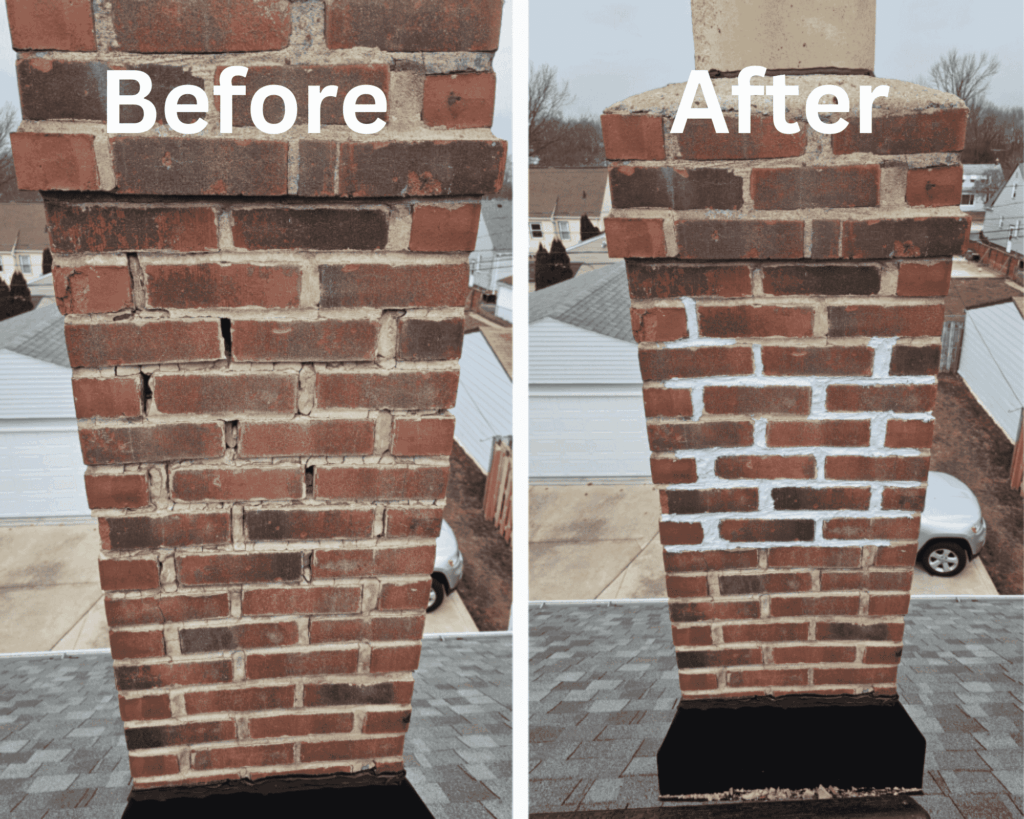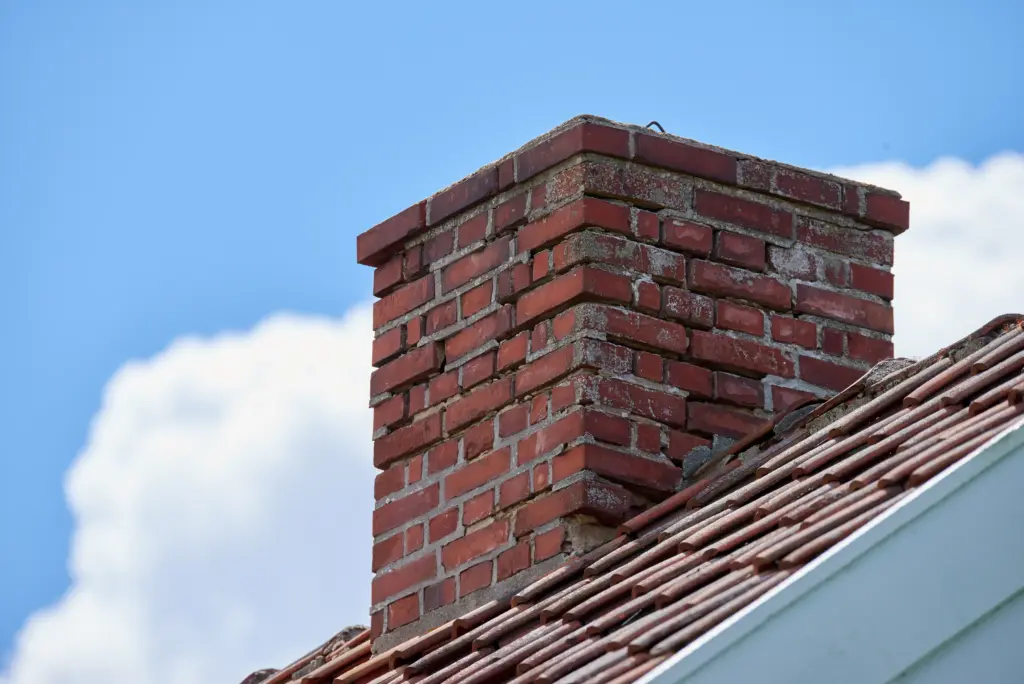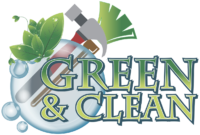Knowing how often to clean chimney is an important part of keeping your home safe and efficient. Over time, soot and creosote build up inside the flue, creating a serious fire hazard and reducing airflow. The National Fire Protection Association (NFPA) recommends annual inspections for chimneys, fireplaces, and vents, followed by cleaning when needed. Determining the right schedule depends on how often you use your fireplace, the type of fuel you burn, and the condition of your chimney.

Why Chimney Cleaning Matters
A well-maintained chimney safely vents smoke, gases, and other combustion byproducts from your home. Allowing soot and creosote to accumulate increases the risk of chimney fires. Blockages or heavy buildup can also push dangerous gases like carbon monoxide into your living space. Learning how often to clean chimney systems is not just about efficiency—it’s also a matter of safety for your home and family.
Factors That Affect Cleaning Frequency
Several factors determine the ideal cleaning schedule for your chimney. Usage remains one of the most important, but other conditions also play a role:
1. Fireplace usage: Frequent fires during the heating season usually require at least one thorough cleaning each year. Occasional fires may allow for longer intervals, though an annual inspection remains essential.
2. Fuel type: Softwoods like pine produce more creosote than hardwoods such as oak or maple. Burning wood that hasn’t been properly seasoned generates extra residue and moisture in the flue. Gas fireplaces create less buildup but still need periodic cleaning to clear dust, debris, and vent obstructions.
3. Chimney design: Short chimneys or those with poor draft accumulate creosote faster. Bends or offsets in the flue can also trap residue.
4. Weather and moisture: In regions with heavy rain or snow, moisture accelerates masonry deterioration and helps residue stick to flue walls. Ohio’s long winters make this a particular concern for local homeowners.

Recommended Cleaning Schedule
So, how often to clean chimney in practical terms? These guidelines offer a starting point:
• Wood-burning fireplaces used regularly: clean at least once a year, ideally before the heating season. * Light use: inspect annually and clean when creosote reaches 1/8-inch thickness. * Gas fireplaces: inspect yearly and clean every two to three years.
These are general rules, not absolutes. If you notice smoke entering the room, unusual odors, or visible deposits, arrange a cleaning right away.
Signs Your Chimney Needs Cleaning
Even if your usual cleaning interval hasn’t arrived, certain signs mean you shouldn’t wait:
– Persistent campfire-like odors from the fireplace. – Dark, flaky, or tar-like residue in the flue or on the damper. – Smoke drifting back into the home. – Nests, leaves, or other debris inside the chimney.

Professional vs. DIY Cleaning
Some homeowners try DIY chimney cleaning with store-bought kits, but professionals deliver better results and greater safety. Trained technicians use specialized tools to remove buildup without harming the flue lining. They also spot hidden damage that could affect performance. Working with a certified sweep who follows NFPA standards ensures the job gets done right.
Homeowners in Northeast Ohio can turn to Green and Clean Home Services for expert inspections and cleanings that meet both industry standards and local safety requirements.
How Creosote Buildup Happens
Creosote forms when unburned wood particles, water vapor, and gases condense on the cooler surfaces of the flue. It may appear flaky like soot, sticky like tar, or hard and glossy. Fires that smolder for long periods, especially with green or resin-rich wood, speed up this process. Because creosote is highly flammable, once it ignites, chimney fires can exceed 2,000°F, damaging masonry and potentially spreading to the rest of the house.
Seasonal Considerations for Ohio Homeowners
Ohio’s long, cold winters lead to heavy fireplace use, which increases the need for routine chimney care. Scheduling your cleaning in late summer or early fall prepares the system before the first cold snap. This timing also gives you room to complete repairs before the busy heating season begins.

Health and Indoor Air Quality
Regular chimney maintenance also supports better indoor air quality. Creosote and soot release fine particles that can irritate the lungs and worsen asthma or allergies. Blockages may cause carbon monoxide—a colorless, odorless gas—to enter your home. Scheduling timely inspections and cleanings helps keep your home’s air safe. For broader air concerns, air duct cleaning can work alongside chimney service to maintain a healthy environment.
Chimney Cleaning and Home Value
Although chimney cleaning is primarily a safety measure, it also protects your investment. A neglected chimney may concern potential buyers. Documented maintenance records show that you’ve cared for the system, which can make your property more appealing.
Preventing Excessive Buildup Between Cleanings
To slow creosote formation, burn only dry, seasoned hardwood. Keep fires hot instead of letting them smolder. Always open the damper fully during use for proper airflow. Avoid burning trash, paper, or other non-firewood materials. These steps help extend the time between professional visits, though they never replace the need for them.

Conclusion
Understanding how often to clean chimney helps you keep your home safe, warm, and efficient. The safest approach is to schedule annual inspections and clean as needed—more often if you burn wood frequently or see warning signs. Professional service removes dangerous creosote and ensures your chimney works as intended. For homeowners in Lake, Cuyahoga, Geauga, Summit, and Portage Counties, Green and Clean Home Services offers trusted local expertise to keep your chimney in peak condition all year long.


